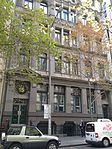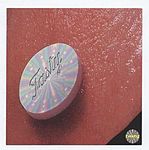Sandridge Bridge
1888 establishments in AustraliaBridges completed in 1888Bridges over the Yarra RiverFormer railway bridges in AustraliaHeritage sites in Melbourne ... and 2 more
Pedestrian bridges in MelbourneUse Australian English from July 2011

The Sandridge Bridge is a historic bridge, originally carrying a railway, over the Yarra River in Melbourne, Victoria, Australia. It runs diagonally to the river's banks and is 178.4 metres (585 ft) long. In 2006 it was redeveloped as a pedestrian and cycle path featuring public art. It is the third bridge on the site and is listed on the Victorian Heritage Register.
Excerpt from the Wikipedia article Sandridge Bridge (License: CC BY-SA 3.0, Authors, Images).Sandridge Bridge
Les Erdi Plaza, Melbourne Melbourne
Geographical coordinates (GPS) Address Nearby Places Show on map
Geographical coordinates (GPS)
| Latitude | Longitude |
|---|---|
| N -37.820218 ° | E 144.962529 ° |
Address
Old Sandridge Railway Bridge
Les Erdi Plaza
3000 Melbourne, Melbourne
Victoria, Australia
Open on Google Maps







